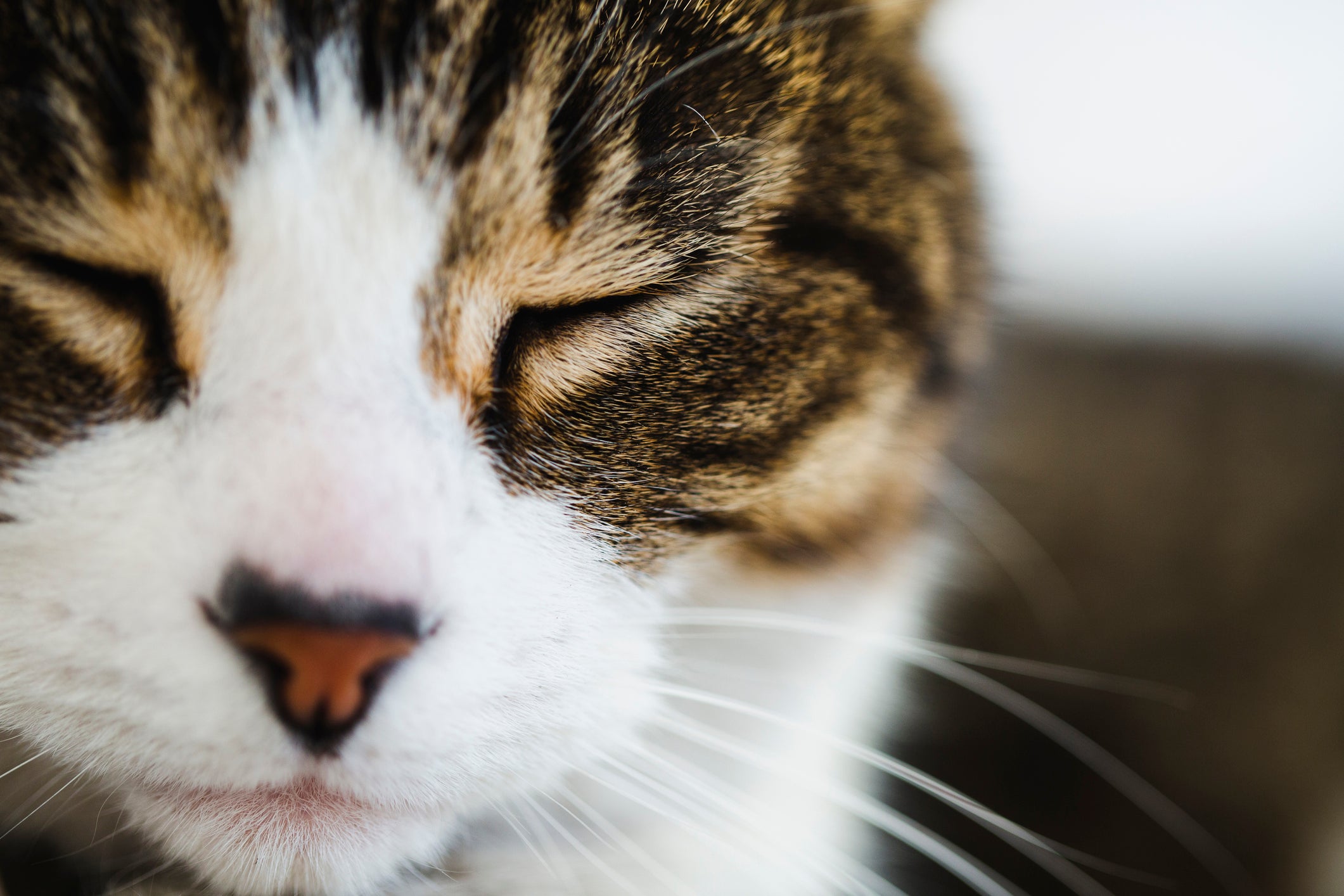The Independent's journalism is supported by our readers. When you purchase through links on our site, we may earn commission.
Narrow your eyes and blink in slow-motion to befriend your cat, scientists find
Cats respond to a natural smile

Cats may be notoriously difficult to befriend, but a new study has found that there might be a simple trick to solving this problem.
According to research published in Scientific Reports, cats are one of several animals that respond to the so-called Duchenne smile, which is defined as a natural smile that sees people raise the corners of their mouth and create crow’s feet around the eyes.
When humans smile at their cats in this way and blink their eyes in slow motion, the cat is likely to respond positively, the study, conducted by researchers at the Universities of Sussex and Portsmouth found.
The cats were also found to mirror the humans’ slow-blink.
The researchers conducted two experiments to reach their findings.In the first, they looked at 21 cats from 14 different households.
They found that these cats were more likely to respond positively to their owners after they slow-blinked at them compared to when they remained passive.
In the second experiment, 45 cats aged between one and 17 were examined.
They were found to be more likely to approach the outstretched hand of a stranger after they had slow-blinked at them, compared to when the stranger maintained a neutral expression.
“Taken together, the study shows that this slow blinking technique can provide a form of positive communication between cats and humans,” the researchers wrote.
Supervisor of the study, Karen McComb, of the School of Psychology at the University of Sussex, told The Times: “It’s great to be able to show that cats and humans can communicate in this way.
“It’s something that many cat owners had already suspected, so it’s exciting to have found evidence for it.”
McComb added that the findings are somewhat revolutionary.
"This study is the first to experimentally investigate the role of slow blinking in cat–human communication.
“And it is something you can try yourself with your own cat at home, or with cats you meet in the street.”
Subscribe to Independent Premium to bookmark this article
Want to bookmark your favourite articles and stories to read or reference later? Start your Independent Premium subscription today.

Join our commenting forum
Join thought-provoking conversations, follow other Independent readers and see their replies